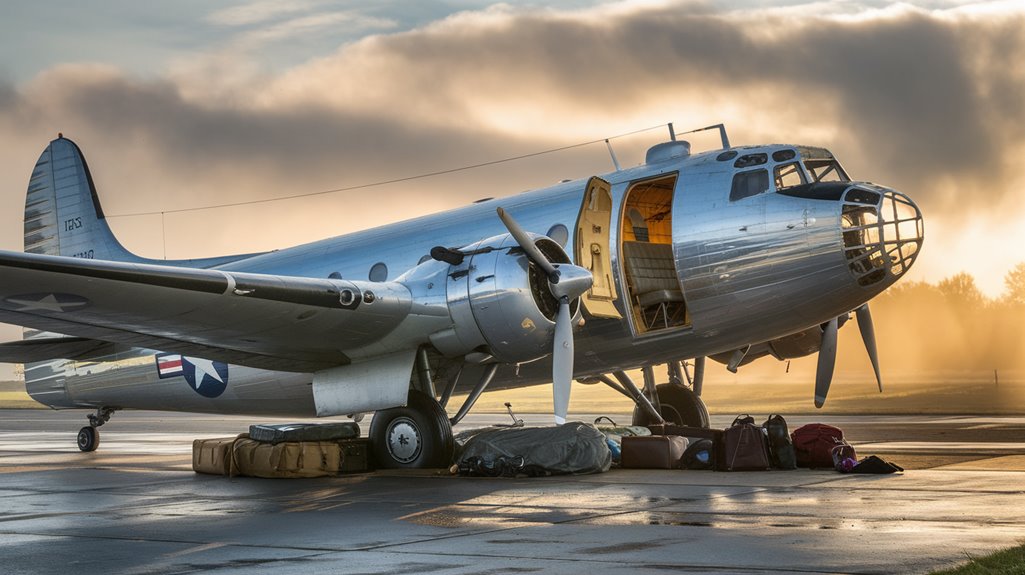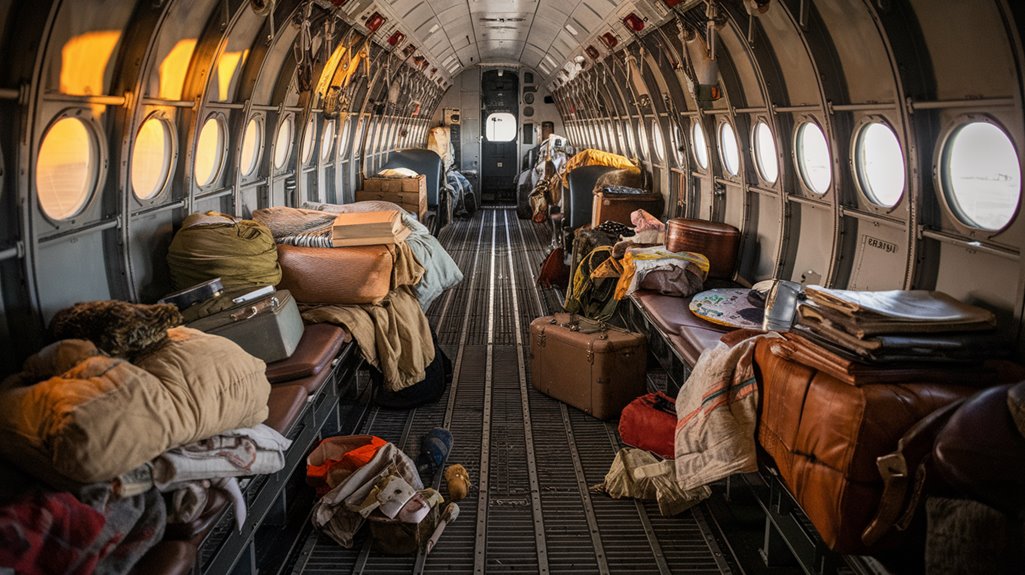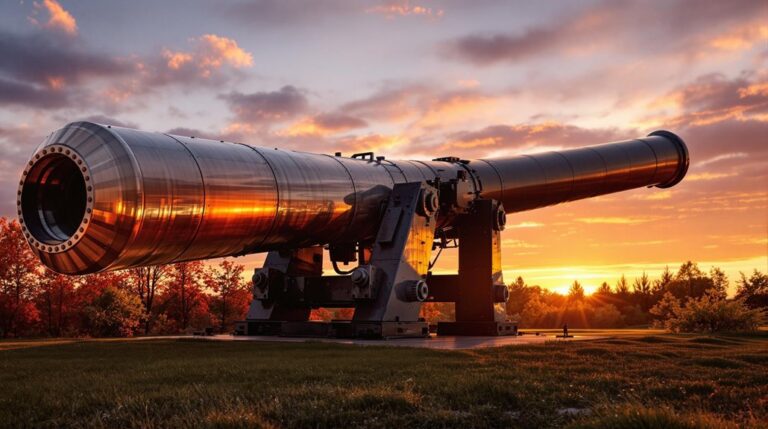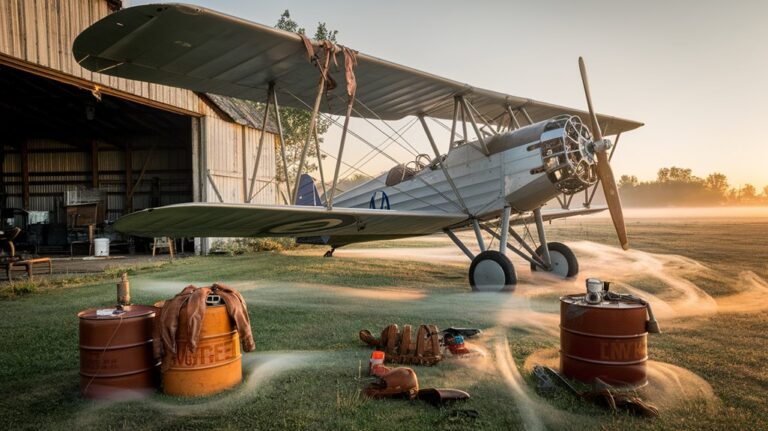1,000 Refugees on One Plane: The WWII Rescue
Like a sardine can stretched beyond its limits, a single aircraft became mankind's desperate answer to survival in one of World War II's most extraordinary rescue attempts. You've probably heard of daring wartime escapes, but the story of cramming 1,000 refugees into one plane pushes the boundaries of what you'd think possible. As Allied and Soviet forces closed in from different directions, this flight would test the limits of both aviation and human endurance in ways that'll make you question everything you know about survival.
The Desperate Flight From Advancing Forces
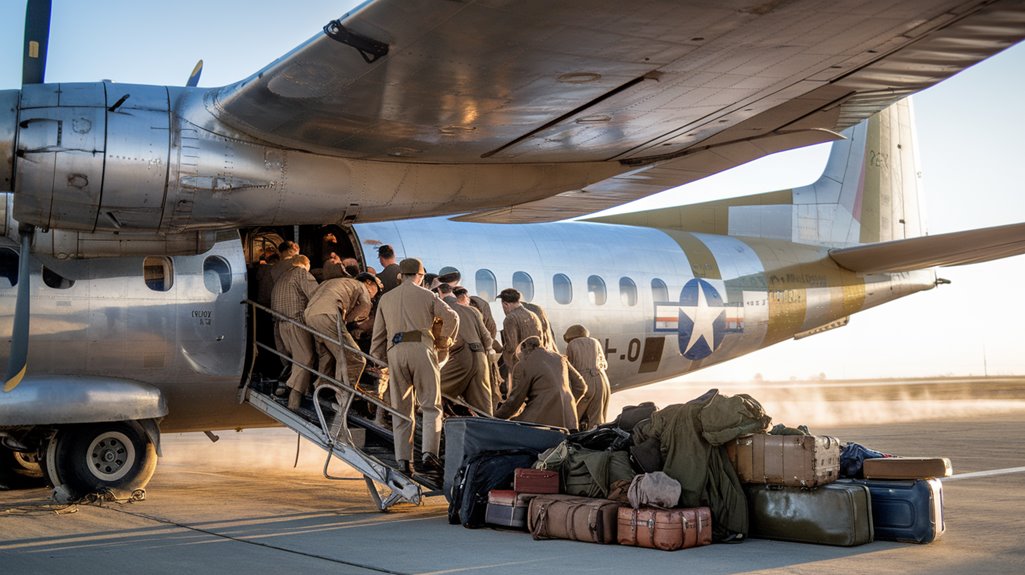
As Allied forces advanced during World War II, millions of civilians faced catastrophic conditions in their desperate bid to escape.
If you'd witnessed these refugee experiences, you'd have seen people pushing carts through deep snow while trying to outrun approaching armies. The wartime survival stories are haunting – refugees were targeted by low-flying aircraft, and some were tragically crushed by tanks during their flight.
You'd have found yourself among kilometers-long queues of people struggling to escape, with many falling victim to relentless bombing raids. Today, approximately one million expellees from this period still reside in Germany.
Nazi authorities had prepared evacuation plans but waited too long to implement them, leaving civilians to face dire circumstances. The resulting chaos led to massive casualties, with death toll estimates ranging from 600,000 to 1.2 million during these frantic evacuations. The Operation Hannibal evacuation managed to transport 250,000 German refugees to safety in Denmark.
A Record-Breaking Rescue Mission Unfolds
While millions fled on foot, some refugees found salvation through extraordinary rescue missions at sea. You'll find one remarkable example in the USS Angler's daring humanitarian efforts, which successfully evacuated 58 people from danger despite severe challenges.
The mission's success hinged on meticulous logistical planning by Commanding Officer Roger I. Olsen, who'd to account for health risks including diarrhea and worms among the refugees. The Japanese occupation forces had mandated the execution of any Americans discovered in the Philippines, making the rescue operation absolutely critical.
This rescue wasn't an isolated incident – it was part of a broader practice of using submarines for evacuation operations during WWII. The extraordinary scale of rescue operations would later be seen in efforts like the Allied airlift operations that delivered over 2.3 million tons of supplies to West Berlin.
When you compare it to other major rescue missions like Kindertransport or the Berlin Airlift, you'll notice a common thread: the critical importance of detailed preparation and the unwavering commitment to saving lives despite operational obstacles.
Inside the Overcrowded Aircraft
Chaos reigned inside the evacuation aircraft as refugees packed themselves into every available space. You'd find people crammed into conditions reminiscent of the overcrowded ships during Operation Hannibal, where vessels like the Wilhelm Gustloff carried far beyond their intended capacity. The desperate evacuation had echoes of the Pillau port crisis, where approximately 100,000 civilians frantically sought escape. Meticulous data tracking from rescue operations would later prove invaluable for historical documentation.
The refugee experiences aboard the aircraft mirrored the desperate situations faced during the war's final stages.
- Children huddled together on the floor, much like those who endured sub-zero temperatures during land evacuations
- Every seat held multiple occupants, similar to the ships that carried thousands beyond their limits
- Luggage and belongings were abandoned to make room for more people
- The aircraft's weight limits were pushed to their maximum, echoing the dangerous overloading of evacuation ships
The cramped quarters created an atmosphere of both relief and tension as passengers fled to safety.
Survival Against the Odds
Despite overwhelming odds, the massive scale of World War II's refugee crisis pushed international relief efforts to unprecedented levels. You'll find that survival strategies emerged through organizations like UNRRA and SHAEF, which coordinated humanitarian efforts to help millions of displaced persons find safety and new homes. Greek children evacuated to India in 1941 highlighted the global reach of these rescue operations.
When you look at the numbers, they're staggering – 55 million displaced in Europe alone. Yet through determined international cooperation, they managed to repatriate 33,000 people daily in the months following the war. The UNRRA administered 800 camps became vital shelters for those seeking refuge.
For those who couldn't or wouldn't return home, particularly those fearing Soviet persecution, the newly established refugee protection systems offered hope. By 1951, you'd see most of "the last million" successfully resettled across the globe, from America to Australia, marking a triumph of human resilience and international aid.
The Legacy of High-Stakes Airlifts
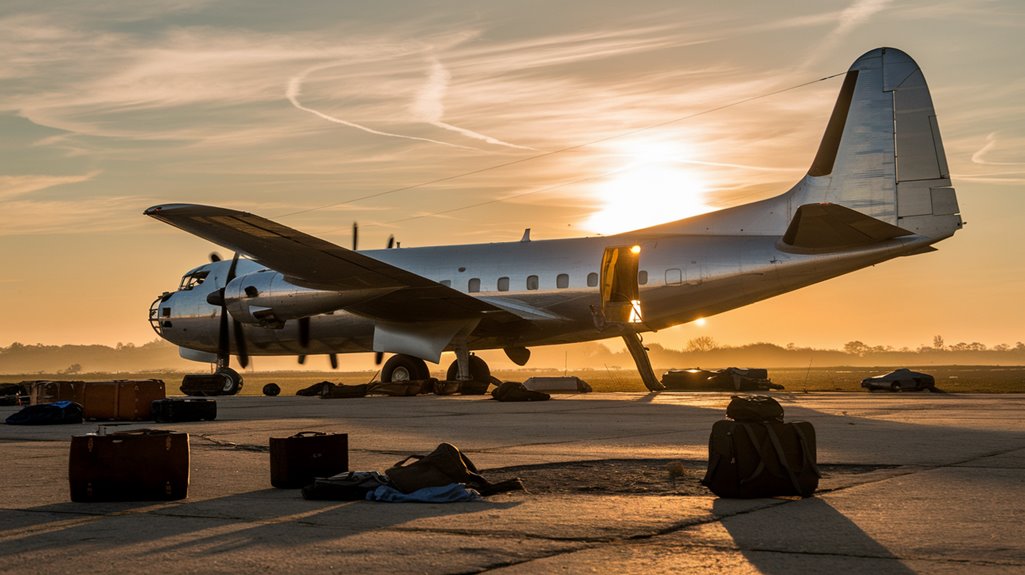
Throughout World War II's darkest days, high-stakes airlifts became a lifeline for countless refugees, with UNRRA and SHAEF orchestrating unprecedented mass evacuations.
The airlift logistics were staggering, moving up to 80,000 displaced persons daily amid severe humanitarian challenges. Similar to the massive evacuation of 1.5 million British citizens from urban to rural areas in 1939, these operations required extensive coordination and volunteer support. The overwhelming scale included six million laborers who had been displaced from their homes.
You'll be amazed to learn that these operations helped repatriate over 5.25 million people in just two months during 1945.
The scope of these airlifts would forever change how the world responds to refugee crises.
- UNRRA and SHAEF coordinated efforts across multiple countries, from Germany to the Middle East
- Daily operations faced complex categorization issues and resource limitations
- Exchange points were established to manage the massive flow of displaced persons
- These airlifts set the foundation for modern international refugee protection systems

